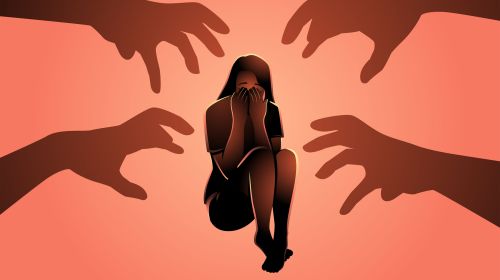Pills and sedatives are not the only things that help against the fear of flying, but also behavioral therapy and special seminars offered by airlines, for example. What causes fear of flying and how to overcome it.
- © iStock.com/photoncatcher
Quick Overview: Fear of Flying (Aviophobia)
Symptoms: From slight discomfort to severe symptoms throughout the body such as headaches, tachycardia or gastrointestinal problems.
Treatment: In many cases, behavioral therapy is recommended. Relaxation techniques and breathing exercises also help. In severe cases, benzodiazepines are prescribed for calming.
Causes: There are many reasons to be afraid of flying. Experiences such as severe turbulence in the air, news of plane crashes, or the thought of handing control over to someone else are frequently mentioned.
Article content at a glance:
What is fear of flying?
Fear of flying (aviophobia) is one of the most common anxiety disorders, which are recognized as an independent disease. It can have a variety of causes and vary in severity. This is not directly related to the flight experience – even frequent flyers can suddenly develop fears as a result of certain experiences such as strong turbulence. However, if you no longer want to travel by plane because of your fear, you run the risk of your fear of flying becoming entrenched. In these cases, therapeutic help is advisable.
Symptoms of fear of flying
Those who experience debilitating discomfort days before a flight, and those who even find excuses not to board the plane, could be suffering from aviophobia.
Other typical symptoms:
Triggers and forms of fear of flying
Depending on the cause, experts distinguish between six forms of fear of flying:
Conditioned fear of flying: The learned fear of flying is triggered by frightening flight experiences: For example, flying through a thunderstorm, turbulence or a fast crash when approaching the airport. Despite these experiences, some people continue to force themselves onto a plane, while others don’t make it. Typically, in anticipation of misfortune, they get sick before departure.
Fear of flying due to current events: In this species, the fear of flying is due to the dangers of flying. Triggers can be news about a plane crash. Shortly before the start of the flight, fears of an impending accident increase massively.
Incapacitation Syndrome: Those affected do not trust the pilots in the cockpit, they feel at their mercy because they cannot take the controls themselves. Especially people who are used to acting autonomously or giving instructions to others find it difficult to endure the helpless flight situation. They feel patronized, even temporarily disenfranchised
Claustrophobia: People in closed or crowded rooms as well as elevators feel the fear of narrowness. This feeling is accompanied by a panicky fear of losing control over oneself, for example having a screaming fit on an airplane. Claustrophobia is exacerbated by other fears: the shame that strangers might notice the fear of flying (sociophobia) and the basic fear of being confronted with strangers (xenophobia).
Cardiac death phobia and fear of death: The phenomenon of Heart death phobia is not limited to airplanes and a heart attack – fear of flying with a stroke is also conceivable. The background is the fear of dying on the plane due to a lack of immediate medical help. Those affected constantly listen to themselves or look for nearby hospitals in foreign cities on the city map.
Pseudo fear of flying: Behind the supposed fear of flying are other fears and reasons that trigger an oppressive feeling when flying.
treatment of fear of flying
With the conditioned fear of flying, the incapacitation syndrome and the pseudo-fear of flying comes one behavioral therapy. In conversation, the fear-triggering situation can be lived through and processed again and again until the trauma has resolved. In the case of incapacitation syndrome, those affected should consider whether there are similar situations in which they feel at their mercy. A more in-depth therapy may be necessary here in order to find a trigger for the fear in the previous stages of life.
Hypnotherapeutic techniques can also be useful if the memory of the shock experience has been repressed to a large extent.
Those who suffer from claustrophobia can find help in situational therapy. Accompanied by the therapist, those affected expose themselves to a confrontation, for example riding the subway or getting into an elevator. In this way, the triggering situations should lose their threatening nature.
Overcome fear of the dangers of flying
Fear of the dangers of flying, triggered by news of accidents and plane crashes, is best resolved with information. Some airlines also offer courses in which you can experience the flight situation in a flight simulator.
There are special therapies for people with cardiac death phobia in which they lose their fear. In a conversation, therapists and those affected clarify the cause of the exaggerated need for security. In practical exercises, they experience situations in which the fear of sudden cardiac death creeps up. This can be an overland trip, for example – if the patient gets home safely several times, the fear is gradually put into perspective.
Treat fear of flying with medication
To relieve fear of a flight, benzodiazepines may be prescribed. The active ingredients are used as sleeping pills and sedatives and can be taken before a flight. However, they have a high potential for addiction and should therefore only be used after careful benefit-risk assessment. In addition, the medication only suppresses the fear, but does not overcome the cause.
Tip: Panic management against fear of flying
The three-phase panic management training is practicable for all six types of anxiety:
Phase: Those affected admit their fear and do not fight against it.
Phase: The fear is neither glossed over (“actually it’s not that bad”) nor dramatized (“my fear is eating me up”).
Phase: Those affected observe the development of their fear. You register the phases and learn how to deal with them.
For many passengers who practice this training in an acute situation, the fear disappears within 20 minutes. In order to prevent panic in the run-up to a flight, relaxation techniques such as autogenic training, progressive muscle relaxation according to Jacobson or breathing exercises to control your own breathing are recommended.
Helpful addresses for people with a fear of flying
Phobias and anxiety are recognized as separate diseases. The health insurance companies keep lists of addresses with the names of treating psychotherapists. University clinics also offer anxiety outpatient clinics where acute states of anxiety are treated. Many airlines also offer information courses to reduce the fear of flying.



